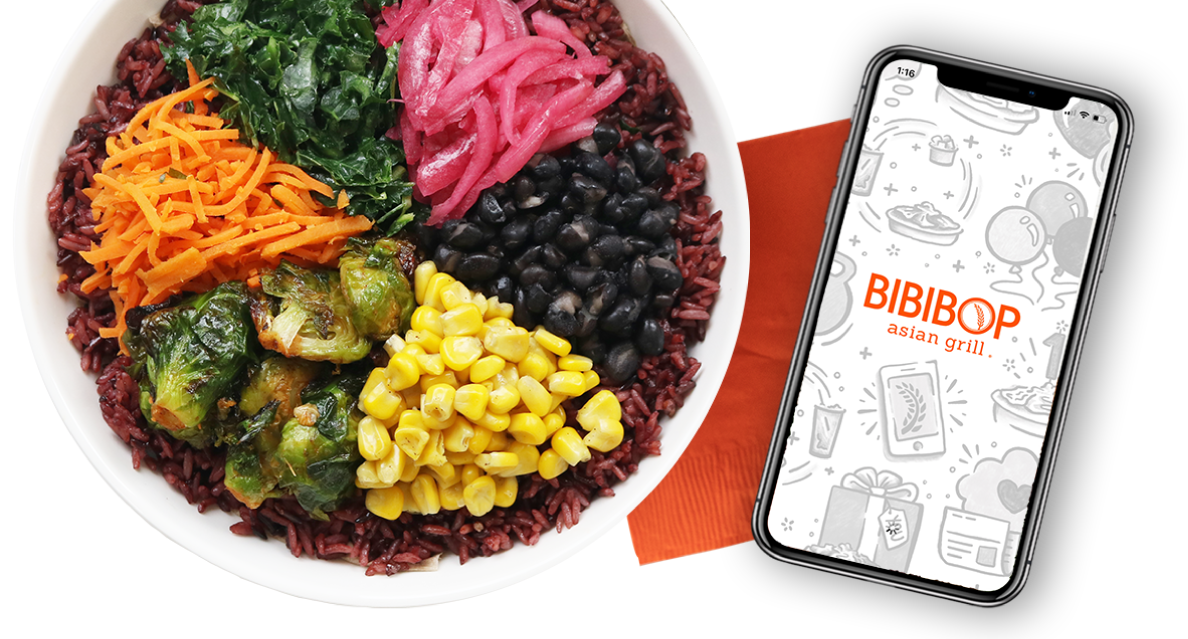The Benefits of Gluten-Free Korean Dining
Korean cuisine has long been celebrated for its vibrant flavors, unique cooking techniques, and diverse dishes. Moreover, it offers a delightful surprise for those with dietary restrictions, as many traditional Korean dishes are inherently gluten-free. In this blog post, we’ll explore the health benefits of gluten-free Korean dining, highlighting its focus on fresh ingredients, balanced flavors, and potential advantages for those seeking gluten-free options.
Which Korean Foods are Gluten-Free?
Fresh Ingredients and Whole Foods
One of the hallmarks of Korean dining and cuisine is its emphasis on fresh, whole ingredients. Gluten-free Korean dishes are typically prepared using naturally gluten-free grains such as rice, abundant vegetables, lean proteins, and legumes. This commitment to fresh, unprocessed foods enhances flavor and ensures a healthier meal overall.
- Rich in Antioxidants: Korean cuisine often features vegetables like kimchi, bok choy, and greens. These vegetables contain antioxidants, vitamins, and minerals, providing a well-rounded, nutrient-dense meal.
- Low in Processed Foods: Traditional Korean dishes rarely rely on processed gluten-laden ingredients. This helps individuals avoid the unhealthy additives and preservatives commonly found in processed foods, promoting better digestive health.
Some of the Top Gluten-Free Korean Dining Dishes
Bibimbap is one of Korea’s most famous and well-loved dishes, consisting of a colorful mix of ingredients served over a bed of warm rice. The name bibimbap translates to “mixed rice,” reflecting how diners stir together the components before eating. Typically, the dish includes sautéed and seasoned vegetables such as spinach, carrots, bean sprouts, and zucchini, along with a protein like bulgogi (marinated beef), chicken, or a fried egg. A key element of bibimbap is the gochujang (Korean red chili paste) sauce, which balances spice, sweetness, and umami, tying all the flavors together. The dish is often finished with a drizzle of sesame oil and a sprinkle of sesame seeds, enhancing its nutty aroma.
There are several variations of bibimbap, each offering a unique take on the dish. Dolsot bibimbap is served in a hot stone bowl, which creates a crispy layer of rice at the bottom, adding texture and extra depth of flavor. Jeonju bibimbap, originating from the city of Jeonju, is one of the most famous regional versions, known for its high-quality ingredients and traditional preparation methods. Another variation, hoedeopbap, swaps out cooked protein for fresh raw fish, resembling a Korean-style poke bowl. Bibimbap is visually appealing and highly nutritious, making it a popular choice for those seeking a balanced and satisfying meal. Its versatility allows for endless customization, making it an iconic and adaptable dish in Korean cuisine.
Miso soup is a traditional Asian soup made from a savory broth called dashi, which is typically infused with miso paste. This fermented soybean seasoning gives the soup its signature umami-rich flavor. The soup often contains ingredients such as tofu, seaweed, and green onions, with variations including mushrooms, daikon radish, or clams for added depth. Miso soup is a staple in Japanese cuisine, commonly served as a side dish alongside meals, especially with rice and other traditional Japanese dishes. Its light yet flavorful taste and its probiotic benefits from fermented miso make it both a comforting and nutritious dish. Whether enjoyed at home or in restaurants, miso soup remains essential to Asian dining culture. Don’t forget BIBIBOP’s miso soup is always available in store at no charge.
Kimchi is a traditional Korean dish made from fresh ingredients and whole foods, including fermented vegetables, primarily napa cabbage and radishes, seasoned with chili pepper, garlic, ginger, and other spices. It is a staple in Korean cuisine, valued for its bold, tangy, and spicy flavors and its probiotic benefits that promote gut health. The fermentation process, which can range from a few days to several months, enhances its depth of flavor and nutritional value. Kimchi is highly versatile, serving as a side dish, an ingredient in various recipes like kimchi fried rice and stews, or even as a topping. Its rich history and cultural significance make it one of Korea’s most iconic and beloved foods.
Bulgogi is a popular Korean dish consisting of thinly sliced beef marinated in a savory-sweet mixture of soy sauce, sugar, sesame oil, garlic, and pear juice before being grilled or stir-fried. The name “bulgogi” translates to “fire meat,” reflecting its traditional cooking method over an open flame, though it can also be prepared in a pan. The marinade tenderizes the meat and enhances its rich umami flavor, creating a dish that is both flavorful and satisfying. Bulgogi is often served with rice, wrapped in lettuce with accompaniments like kimchi, or incorporated into dishes like bibimbap. Its tender texture, balanced flavors, and versatility make it a beloved staple of Korean cuisine. Check out our blog to learn about BIBIBOP’s spin on Bulgogi, Korean BBQ Beef.
Jjigae is a traditional Korean stew known for its rich flavors and comforting warmth. It is made by simmering a combination of ingredients such as meat, seafood, tofu, and vegetables in a flavorful broth, often seasoned with gochujang (Korean red chili paste), doenjang (fermented soybean paste), or ganjang (soy sauce). Popular varieties include kimchi jjigae, made with aged kimchi and pork; soondubu jjigae, a spicy soft tofu stew, and doenjang jjigae, a savory soybean paste-based stew with vegetables and tofu. Jjigae is typically served piping hot in an earthenware pot alongside steamed rice and side dishes, making it a staple in Korean households. Its deep umami taste and versatility allow it to be adapted to various ingredients, making it a beloved comfort food in Korean cuisine.
Sweet potatoes are a beloved ingredient in Korean cuisine, featured in a variety of popular dishes ranging from savory to sweet. One of the most well-known is goguma mattang, a caramelized sweet potato dish where crispy, deep-fried sweet potato chunks are coated in glossy honey or sugar syrup, often sprinkled with sesame seeds. Another favorite is goguma latte, a warm and creamy sweet potato drink made by blending roasted sweet potatoes with milk, creating a naturally sweet and comforting beverage. Gun-goguma, or roasted sweet potatoes, are a simple yet iconic Korean street food often enjoyed during winter for their soft, naturally sweet flesh. Sweet potatoes are used in savory dishes, such as Japchae, where sweet potato starch noodles (dangmyeon) are stir-fried with vegetables and meat in a flavorful soy-based sauce. Additionally, sweet potatoes frequently appear as a topping on sweet potato pizza, a unique Korean twist that blends the vegetable’s natural sweetness with cheese and other savory ingredients. These diverse dishes highlight the versatility and popularity of sweet potatoes in Korean cuisine.
Anyone looking to have an approachable Korean noodle dish needs to look no further than their local BIBIBOP. BIBIBOP’s sweet potato noodles, known as Japchae, are a Korean-inspired dish featuring stir-fried glass noodles made from sweet potato starch. These translucent, chewy noodles are tossed with a savory-sweet sauce, typically made with soy sauce, sesame oil, and a touch of sweetness, creating a flavorful and satisfying dish. Japchae is traditionally mixed with a variety of vegetables such as carrots, spinach, onions, and mushrooms, and often includes protein options like beef or tofu. At BIBIBOP, their version of Japchae serves as a delicious and gluten-free base or side, offering a nutritious and flavorful alternative to rice. With its well-balanced flavors and smooth, springy texture, Japchae is a popular choice for those looking for a lighter yet fulfilling meal.
Bossam is a popular Korean dish consisting of tender, slow-boiled pork, typically pork belly or pork shoulder, that is sliced and served with various accompaniments. The pork is simmered in a flavorful broth infused with fresh Korean ingredients like garlic, ginger, onions, and sometimes doenjang (fermented soybean paste) to enhance its savory depth. Bossam is traditionally eaten by wrapping the juicy pork slices in ssam (lettuce or napa cabbage leaves) along with fresh or fermented accompaniments such as ssamjang (a thick, savory dipping sauce), kimchi, garlic, and spicy radish salad (musaengchae). A popular variation includes bossam kimchi, a well-seasoned, less fermented kimchi specifically made to pair with the dish. Bossam is often enjoyed as a communal meal, particularly during gimjang, the traditional kimchi-making season, making it a beloved comfort food that brings people together.
Tteokbokki is a beloved Korean street food made of chewy rice cakes (tteok) simmered in a spicy, slightly sweet, and savory gochujang (Korean red chili paste) sauce. This dish is known for its bold flavors and satisfying texture, often featuring additional ingredients like fish cakes (eomuk), boiled eggs, green onions, and even cheese for extra creaminess. Tteokbokki is widely enjoyed as a snack or meal, commonly sold by street vendors and in casual eateries across Korea. Variations of the dish include gireum tteokbokki, a stir-fried, non-spicy version, and rose tteokbokki, which incorporates cream for a milder, richer taste. Whether eaten on the go or shared at a restaurant, tteokbokki is a comforting and flavorful dish that has become an essential part of Korean cuisine.
Balanced Flavors and Umami
Korean cuisine is renowned for its mastery of balancing flavors. A well-prepared Korean meal combines sweet, savory, spicy, and umami tastes to create a symphony of flavors that delight the palate.
- Umami Magic: Many Korean dishes achieve their distinct umami flavor through ingredients like soy sauce, fermented bean paste (doenjang), and sesame oil, all of which are gluten-free. Umami enhances the taste of food and encourages mindful eating by making dishes more satisfying.
- Balanced Meals: Gluten-free Korean dining typically offers well-balanced meals with ample proteins, fibers, and healthy fats. This balance can help regulate blood sugar levels and keep you full and energized throughout the day.
Potential Benefits of Dietary Restrictions
For those with gluten sensitivities or celiac disease, the gluten-free nature of many Korean dishes can be a blessing.
- Gluten-Free Grains: While wheat is a common source of gluten, Korean cuisine predominantly relies on rice as its staple grain, which is naturally gluten-free. Bibimbap, for instance, can easily be made with gluten-free alternatives to traditional barley rice.
- Awareness and Adaptation: With the growing awareness of dietary restrictions, many Korean restaurants offer gluten-free options or can adapt their dishes to accommodate specific needs. This inclusivity makes dining out a more enjoyable experience for those with dietary restrictions.
Gluten-free Korean dining is a delightful journey into a world of fresh ingredients, balanced flavors, and potential health benefits. Whether you have dietary restrictions or wish to explore a cuisine that prioritizes wholesome, naturally gluten-free ingredients, Korean cuisine offers an array of delectable dishes to satisfy your cravings while nourishing your body.
So, the next time you search for a healthy and gluten-free dining experience, consider trying authentic Korean cuisine. From the delightful flavors of kimchi to the comforting warmth of a hot bowl from BIBIBOP, you’ll discover a world of culinary treasures that satisfy and support your health goals.



